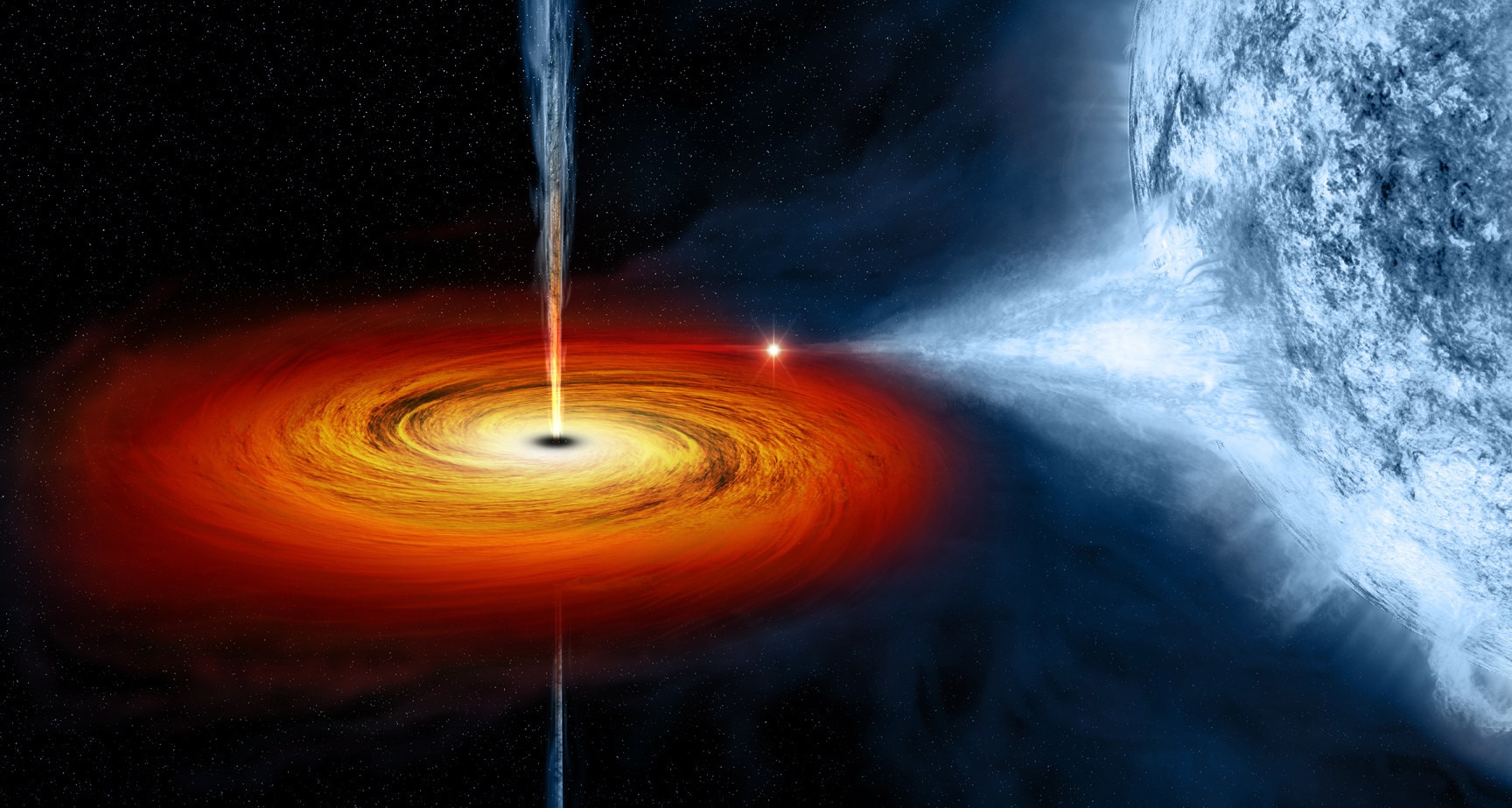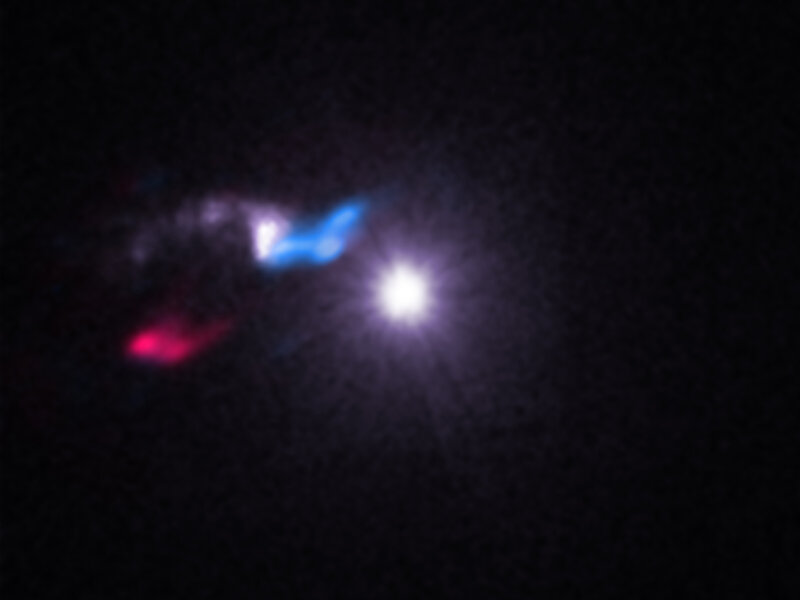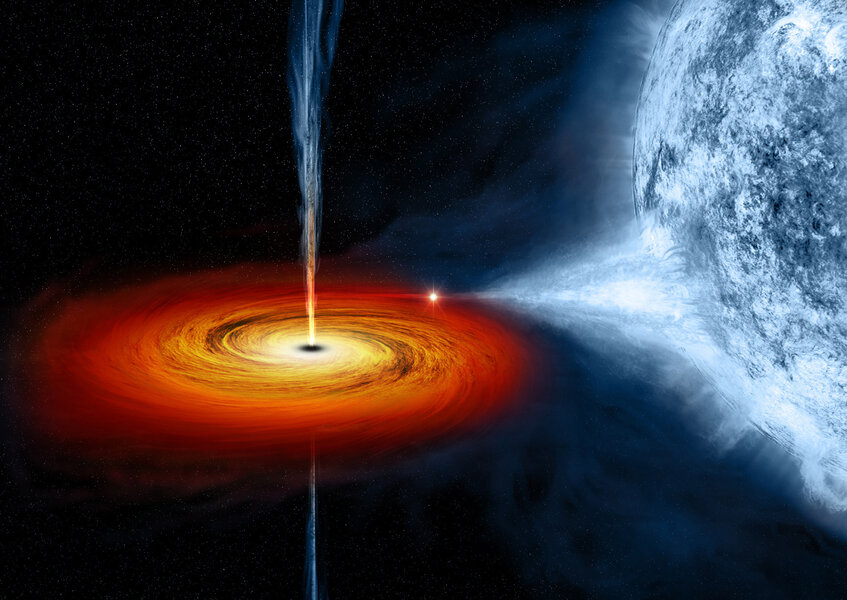Create a free profile to get unlimited access to exclusive videos, sweepstakes, and more!
The dead star, the doomed star, and their little friend

A million or so years ago, and a quarter of the way across the galaxy from us, a star exploded.
It started out life as a massive beast, at least 30 times heftier than the Sun and possibly twice that. It led a short and furious life before detonating as a supernova, for a brief time outshining the rest of the stars in the Milky Way combined. After that it left behind a beautiful corpse, either a super-dense neutron star or, more likely, a black hole (for the purpose of this let's just go with it being the latter).
For most stars the story would pretty much end there. But in this case the star had a binary companion, and, as luck would have it, it too is a beast. This other star may have started its own life out with lower mass, then drew material off its spouse before it went supernova. When the first star did explode, the second somehow survived the hellacious fireball and subsequent events. When all was said and done, what was left was a blue supergiant star orbiting a black hole on a very tight leash: One orbit only takes 4.8 hours.
The second star is now a Wolf-Rayet type, which means it's massive, luminous, and prone to blasting off gigantic paroxysms of gas and energy (and also short-lived, which is why the million-year age of the supernova is a reasonable guess; sometime in the near future this star will explode, too). A wind of material blows off it, which is then captured by the black hole, forms a swirling disk, and heats up to ridiculously high temperatures. It's so hot it blasts off X-rays, and in X-rays alone it emits 100,000 times as much energy as the Sun does across the entire electromagnetic spectrum. These X-rays brighten and dim on that 4.8-hour orbital period, as the massive star is sometimes closer and sometimes farther from the black hole on its elliptical orbit.
And that, in a nutshell, is Cygnus X-3 — so named because we see it in the constellation of Cygnus and it was the third X-ray source discovered in its borders. Cyg X-3 is one of the most luminous objects in our entire galaxy, and if it weren't sitting behind layer after layer of nearly opaque dust clouds in our galaxy, we'd see it a phenomenally bright star in our skies. Good thing it's 25,000 or more light-years away.
Not a very amiable object, you'd think, but in 2003 astronomers discovered another X-ray source very close to it on the sky (just 16 arcseconds, or less than 1/100th the apparent size of the Moon on the sky). It took 10 years, but follow-up observations allowed astronomers to identify it as a small cloud of dust and gas called a Bok globule. These are generally dense knots of material a light-year or two across, very cold, and sometimes have a star or two forming in them. This one was so close to Cyg X-3 in the sky they called it the "Little Friend."
That's a bit odd, actually: Little Friend is far, far too chilly to emit X-rays! But observations showed the X-rays seen from it also brightened and dimmed on a 4.8-hour cycle. It must be reflecting the X-rays from Cyg X-3, like a gigantic mirror in space!
This allowed astronomers to use some statistical methods to determine the distance of the Little Friend: It's likely about 20,000 light-years from Earth, and 4-5,000 light-years from Cyg X-3; they appear so close together in the sky because coincidentally, from Earth, they lie almost exactly along the same line of sight. Still, this speaks to the black hole binary's terrifying power: Even at that forbidding distance, the Little Friend sees so much X-ray energy from it that we can detect them bouncing off the dust.
Astronomers looked at Little Friend using a submillimeter telescope (sensitive to light well outside our eyes' color range, with wavelengths a bit less than a millimeter) and found emission from cold carbon monoxide, which is common from Bok globules. This allowed them to determine it is probably low mass, maybe only 4 times the mass of the Sun, and small, less than a light-year wide.
However, it does appear to have a star forming inside it! Beams of material called jets were seen moving away from the Little Friend in opposite directions, one aimed more or less toward us and the other away. This happens frequently when stars are born, as the young protostar spins rapidly, and its magnetic field focuses these jets. I was surprised to read the material in the jets is only moving at about 1 kilometer per second, but it turns out that's expected for low mass star-forming clouds.
What an amazing set of objects! Three young stars, one dead, one well on its way, and another just getting its start, still enshrouded in its thick cocoon of material. They are likely unrelated, but just so happen to line up in our telescopes such that we can see one lit by the other. The binary is blasting out radiation across the spectrum in as violent and powerful a manner as is possible, while the other is low-key sending out material in a much calmer and gentler manner.
I am constantly amazed by the things we see in the sky. In our galaxy alone there is a vast and diverse menagerie of objects, some so extreme that it may be decades before we fully understand them (if ever). And we must look at them in different ways, with different telescopes sensitive to different wavelengths, if we can ever hope to understand them at all.
I like that. It reminds me that not everything we see is all there is, and we should make sure we are open to possibilities that perhaps we might otherwise miss.
















